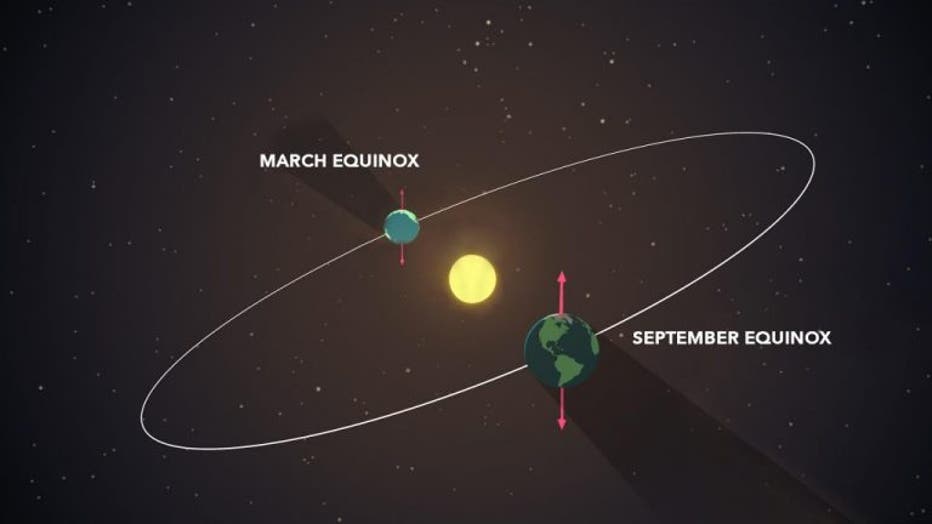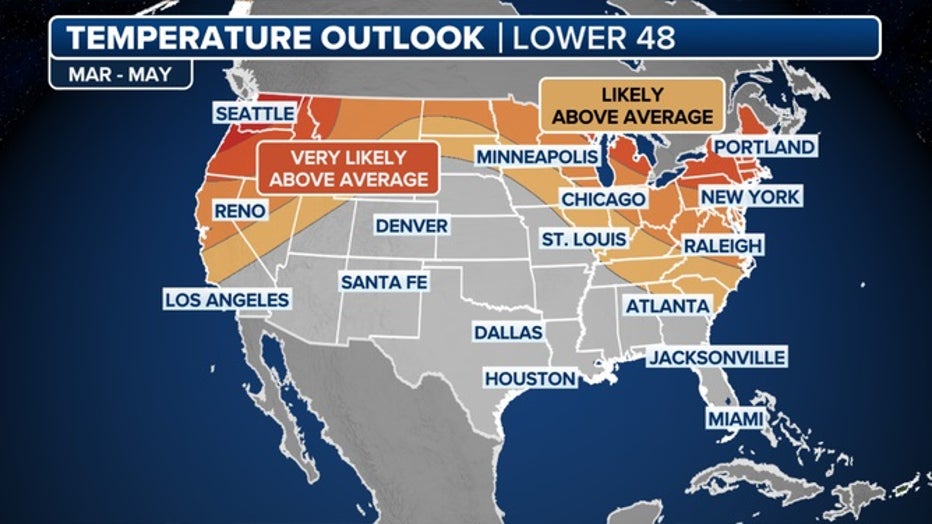Spring 2024 starts Tuesday: What to know about the vernal equinox

What is the vernal equinox? The science behind the astronomical seasons explained
The vernal equinox marks the beginning of astronomical spring and occurs in the Northern Hemisphere around March 20th, whereas the autumnal equinox falls around September 22nd.
The 2024 vernal equinox – also known as the astronomical start of spring or fall, depending on where you are – will take place Tuesday.
The March equinox happens at 11:06 p.m. Eastern time, marking the beginning of spring for the Northern Hemisphere and the start of fall in the Southern Hemisphere, according to Almanac.
In the U.S., get ready for earlier sunrises and later sunsets until the summer solstice in June. It’s time for warmer weather, gardening, and lots of migrating animals.
RELATED: The world’s largest ‘dark sky sanctuary’ is now in this US state
Here’s what to know about the spring equinox.
What is the spring (vernal) equinox?

An illustration of the March (spring) and September (fall or autumn) equinoxes. During the equinoxes, both hemispheres receive nearly equal amounts of daylight. (Image not to scale) Credits: NASA/GSFC/Genna Duberstein
The Earth moves around the sun at an angle, and for most of the year, its axis is tilted either away from or toward the sun. That means the northern and southern hemispheres get unequal amounts of sunlight – except during the equinox.
During the equinox, the Earth’s axis and its orbit line up, and both hemispheres get roughly an equal amount of sunlight.
The word equinox comes from two Latin words meaning equal and night. That’s because on the equinox, day and night last almost the same amount of time — though one may get a few extra minutes.
RELATED: 'Devil comet' could become visible to the naked eye this month
The spring — or vernal — equinox can land on March 19, 20 or 21, depending on the year.
What’s the difference between astronomical spring and meteorological spring?
This is the second time in 2024 we’re marking the start of spring. Meteorological spring began on March 1.
Meteorological seasons are defined by the weather. They’re divided into three-month seasons based on yearly temperature cycles. Meteorological spring ends May 31.
Astronomical seasons depend on how the Earth orbits the sun.
Equinoxes, when the sun lands equally on both hemispheres, mark the start of spring and autumn. Solstices, when the Earth sees its strongest tilt toward or away from the sun, kick off summer and winter.
Spring 2024 weather outlook

This image shows NOAA's three-month temperature outlook for meteorological spring (March, April and May 2024). (FOX Weather)
The spring temperature outlook favors above-average warmth across the northern US, according to FOX Weather. The Pacific Northwest and New England have the highest chances of seeing above-average temperatures through the end of May.
In the southern U.S., there are equal chances of seeing either above-average or below-average temperatures.
The transition to El Niño Southern Oscillation (ENSO)-neutral conditions is expected by the end of spring or early summer, with La Niña conditions expected to develop later in the summer or early fall.
The Associated Press and FOX Weather contributed to this report.

